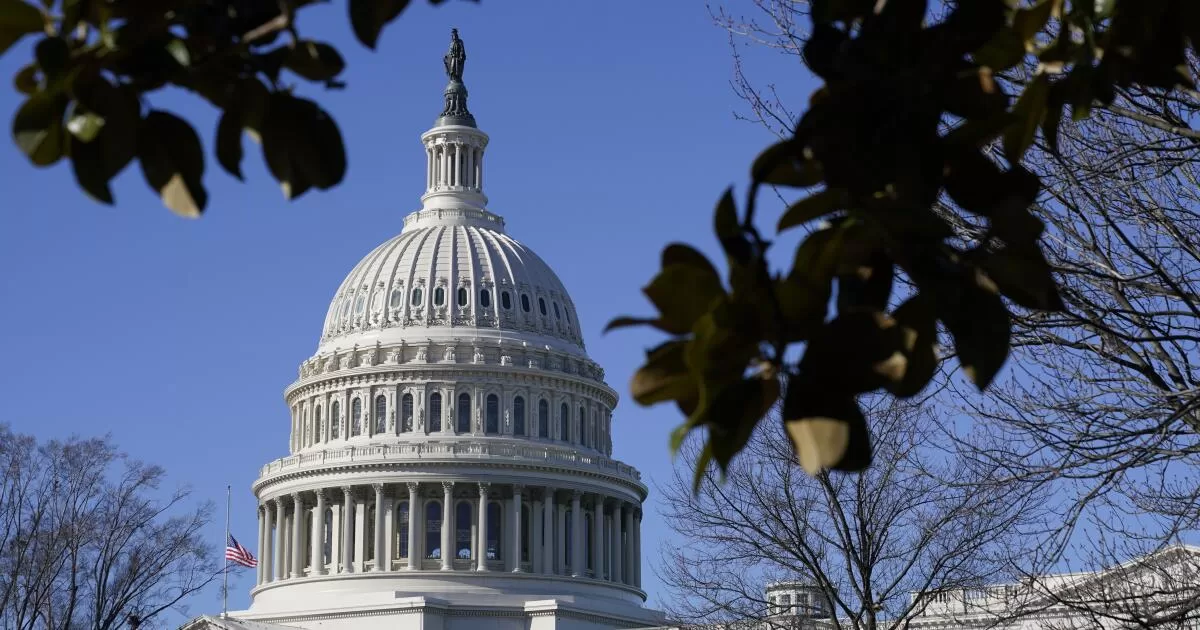It’s the most the House Majority PAC booked in any state in its initial $186-million advertising buy announced on Sunday, the largest amount the organization has ever spent in early campaigning.
“House Republicans have done nothing but sell out the American people while creating chaos, and we are holding them accountable for their anti-American extremist policies and agenda,” said Mike Smith, the president of the PAC allied with House Minority Leader Hakeem Jeffries (D-N.Y.).
“Through these historic television and digital reservations, House Majority PAC has made it clear that we are ready to do whatever it takes to flip the House and elect Hakeem Jeffries the next Speaker of the House,” Smith said in a statement.
The Congressional Leadership Fund, the Republican version of the House Majority PAC, has not yet released its early-spending plans. However, the group’s leader expressed confidence in the GOP’s chances in the fall.
“We have incredibly strong Republican incumbents in the toughest races, far better recruits, and a political environment that seems to favor Republicans,” CLF President Dan Conston said in a statement. “If the resources are there, we will hold the Majority this fall.”
The Democratic political action committee announced last year that it would spend $35 million in the state, roughly triple what it did on California congressional races in the 2022 midterm elections, when Democrats underperformed in some districts that should have been strongholds.
Political groups on both sides of the aisle don’t always follow through with their advertising reservations, so it remains to be seen how much the PAC will actually spend in California.
However, Democrats need to win four seats to take control of the House, which is why the House Majority PAC’s spending plan — which is aimed at 45 congressional districts nationwide, including Republican-held seats in districts that President Biden won in 2020 — is so focused on California.
The state’s 52-member delegation is the largest in the nation, and California’s independent redistricting process replaced the prior gerrymandering that created safe districts for both parties, resulting in more competitive races.
Of the 435 members of the U.S. House of Representatives, 69 are running in November races that are rated as toss-ups, competitive or potentially vulnerable by the nonpartisan Cook Political Report, which has tracked House and Senate races for decades. Ten of those are in California.
Additionally, the state is home to some of the nation’s most expensive media markets.
These factors are reflected in the House Majority PAC’s spending plans.
In its initial ad buy, the group plans to spend $18.1 million in the Los Angeles media market as well as an addition $1.1 million on Spanish-language messaging. This area’s television ads are seen by voters in the districts of GOP Reps. Mike Garcia of Santa Clarita, Ken Calvert of Corona, Michelle Steel of Seal Beach and Young Kim of Anaheim Hills, several of which are expected to be fiercely contested in November, as well the bitter race being waged for the purple Orange County seat vacated by Katie Porter for the Democrat’s unsuccessful U.S. Senate run.
Other spending in the state targets GOP districts held by Reps. David Valadao of Hanford, John Duarte of Modesto and Kevin Kiley of Rocklin, as well as efforts to prop up Democratic Reps. Josh Harder of Tracy and Mike Levin of San Juan Capistrano.
